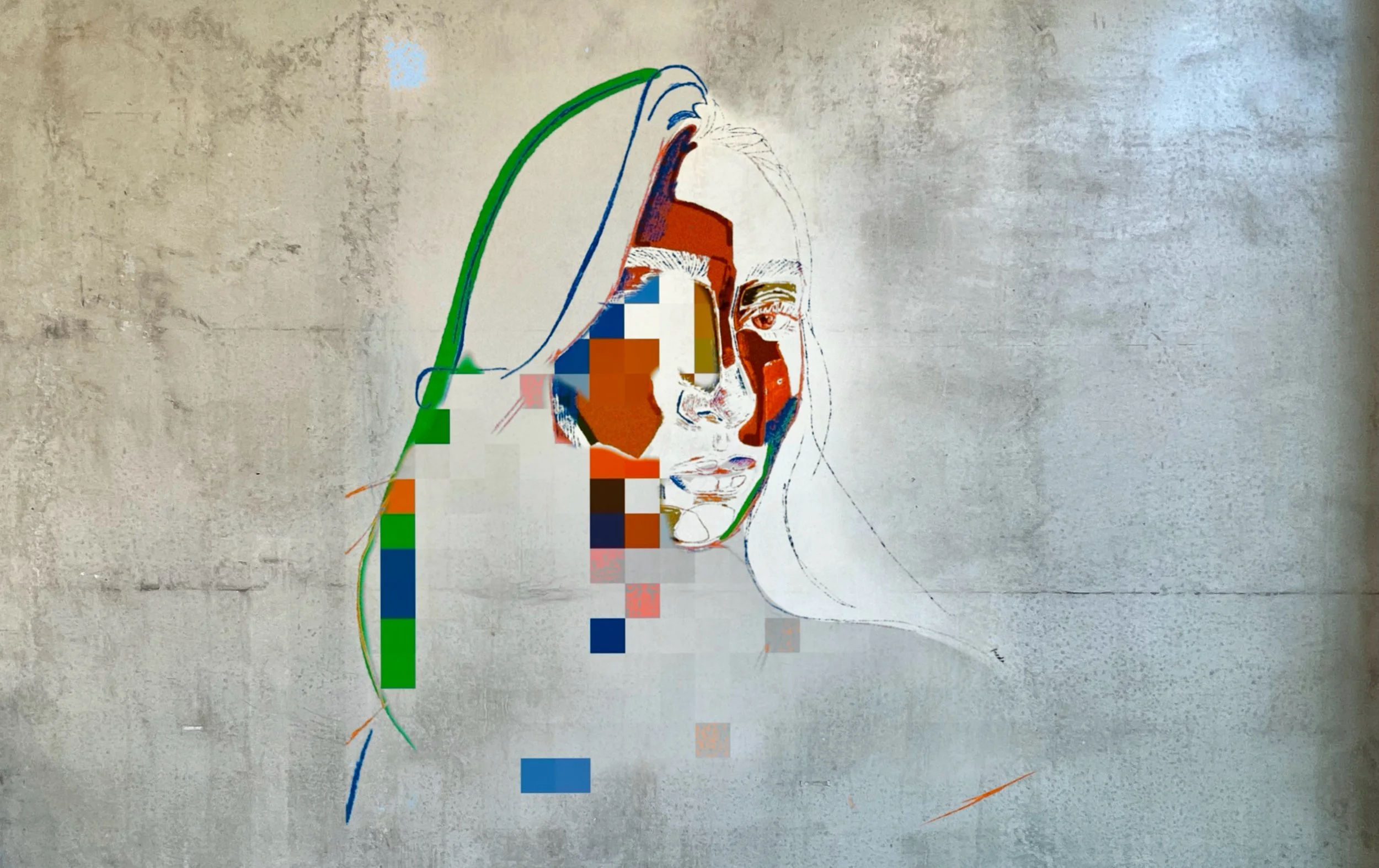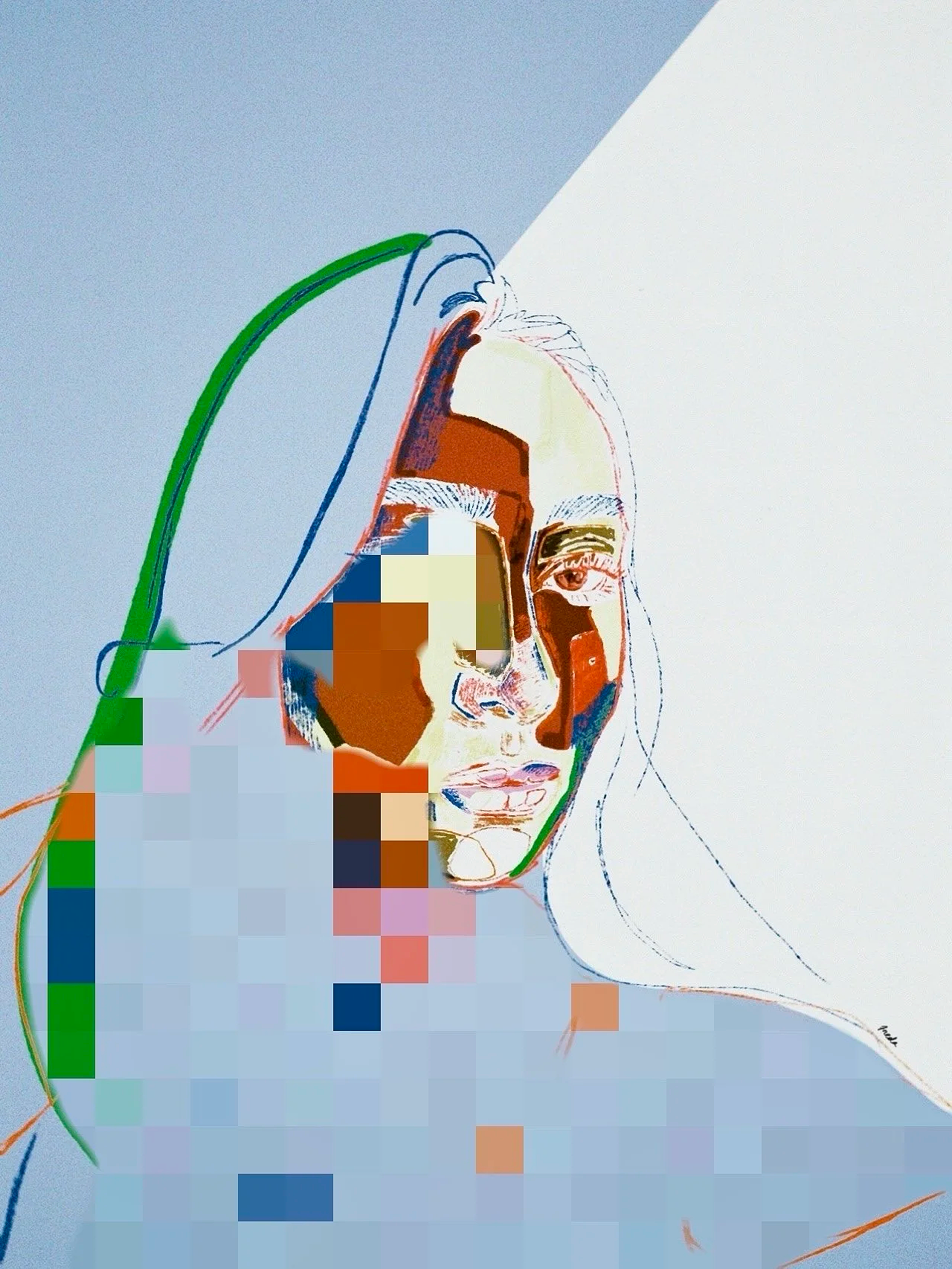Insomnia
London / Vilnius
2025
A self-portrait between night and departure, Insomnia is a visual representation of dissolution. The piece captures the moment before form yields to awareness, where its colour palette is estranged from realism but in turn, traces the slow corrosion of identity. Fading like sunlight on paper, the artist captures the unrelenting, precise and inevitable tides of change.
This work began as a portrait, and later manifested into a visual screenshot of the process of shedding. The eye once tied to clarity and outward perception, dissolves into pixels of colour that travels down the face, hair and collar. The pixels resemble fragments of data, as if the self is decomposing into code, breaking down old modes of vision into abstract information before reformation.
The colour palette, both faded and jarring, recalls memory worn by time. Combined with the pixelation, the work exists in two temporal registers: the analog fading of nostalgia and the digital disassembly of perception. Past and present converse across the image. The colours and forms act as residue. What fades, stains, or endures when appearances lose their certainty.
‘Insomnia’
There are seasons when the internal pull to shed arrives before the external world reflects it. This portrait inhabits that in-between. The space where awareness meets decay, intuition precedes collapse and the old self begins to dissolve before life enforces it.
Disappearance is not loss but preparation, a return to the ground before the next emergence. The shedding recorded here is not dramatic as it is steady, deliberate and part of the ongoing rhythm of awareness. Rest comes only after surrender and clarity is no longer sought, only what waits beyond it.
Reflection
Insomnia is a record of ongoing evolution. It is not a new shedding, but the steady rhythm of life as the artist knows it. The distortion of form, the fading of colour and the pixelation of the gaze. These are all evidence of awareness in motion, endured with calmness.
In its creation, surrender became the method. A metamorphosis, an acceptance that death and rebirth are constants in the artist’s life. The work becomes an act of witnessing transformation and moving with it, ahead of external collapse.
It stands in time as a reflection of the modern digital mirror. Where identity is mediated by screens, repetition and data. Yet remains anchored in human experience. It asks: when the image of the self begins to break down, who remains awake inside the disruption? What emerges when the old vision fails and the new one opens?
Through it, the artist considers the threshold before transformation. The liminal hour of sleepless awareness and the capacity to trust oneself to move with the first internal tug. Before external circumstances enforce change more ruthlessly than the discomfort of facing oneself. Insomnia becomes an introspection on perception, evolution and the subtle persistence of consciousness. Of being awake when the world sleeps.
The night before transformation. That long threshold where the old self can’t rest, because it knows it’s about to dissolve.

